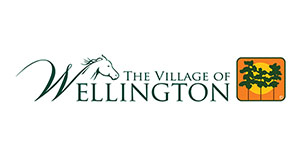Wellington’s Architectural Review Board passed a resolution last week codifying the approved colors for residents to paint their homes and delayed any current action on changing acceptable colors of fencing until after the new year.
At its Wednesday, Nov. 28 meeting, the board discussed how its procedures will now be significantly different from past years.
“We have a three-foot by three-foot board with all the approved colors,” Vice Chair Tom Wenham explained.
Wellington Development Review Coordinator Cory Lyn Cramer said that previous boards periodically reviewed the colors to keep up with trends and retire colors that are no longer popular, such as pink.
Cramer explained that in the past, the board reviewed non-complaint applicants on a case-by-case basis and granting a variance did not have any effect on other homeowners. However, the state has deemed it illegal for them to issue such permits, she said.
This is an action that Board Member William Klein said was an incursion into the village’s right of self-rule and encouraged residents to contact their representatives to complain.
Cramer said that Village Attorney Laurie Cohen has reviewed the situation and determined that a case-by-case variance could be construed as the issuance of a permit, which would be illegal.
The resolution makes any approval of a previously non-approved color an addition to the board of samples village wide for other residents to select as their home’s color as well.
Board Chair Ron Shamash said that for years, the Architectural Review Board has accepted applications from homeowners seeking variances to paint their home unapproved colors and has decided to issue approvals or rejections on a case-by-case basis.
“It’s what we do,” he said. “If someone wants to paint their house purple and they live on 30 acres, it is different than if they live close to other houses.”
Shamash lamented the change.
“There are no more special circumstances,” he said. “If we approve anyone, then anybody [in the village] can use that color.”
The meeting’s other main topic was a discussion of fences, specifically white PVC fences, which are prohibited, although beige, brown and gray PVC fences are acceptable, and white wooden fences are also fine.
The rule was established in 2013 by a previous board with assistance of different staff, and the minutes of the meeting on the topic are only about three sentences noted from what is remembered as an extensive discussion.
“It was voted unanimously, so they must have had a good reason,” Shamash said.
Klein wanted to see the prohibition against white PVC fences eliminated immediately.
Board Member Roger Grave de Peralta said that he was not prepared to make a decision at that meeting without knowing why white PVC fences were prohibited to begin with, or to see evidence of what was wrong with using them. For example, did they discolor or fall into disrepair too quickly, creating a code violation?
The board members lamented that the original meeting’s discussion was lost to posterity and remarking that differing views were only opinions.
Wenham noted that any fence of any approved color had to have landscaping to help hide the fence.
The fencing measure will be on the agenda for the next Architectural Review Board meeting, which will be in January. There is no December meeting scheduled.
In other business, a brief public hearing was held for Joe DiMaggio Children’s Hospital to change a sign that had already received a variance to be larger than code allowed. The approved sign is smaller than the approved variation, which has three lines of text compared to the two that were permitted when the preliminary plans were approved.
The final site plans call for a separate entrance to the outpatient center, and the third line of text will read “Outpatient Center” to direct patients to that door. There were no public comments, and the measure passed 5-0.
The final item of the night was to approve an alternative design feature of 75 linear feet of white PVC fence that had already been mistakenly installed at a home without prior board approval. A stop-work order had been issued by the village.
As the home is on a cul-de-sac, and the fence can barely be seen from the street, and the adjoining neighbor had no objections, the board approved the project unanimously. The approval allows the project to be completed with the required landscaping that will further obscure the non-conforming fence.
Fences requiring a variance will continue to be approved on a case-by-case basis, for now.








